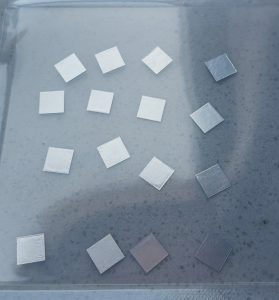In semiconductor packaging, high-performance processors commonly use FCBGA (Flip-Chip Ball Grid Array) packaging. Given the substantial power consumption of these processors, they require more efficient thermal management systems. Indium (In), known for its excellent thermal conductivity, has emerged as a potential ideal replacement for traditional thermal interface materials (TIM) in large-package products, promising enhanced heat dissipation.
FCBGA Market Growth Driven by Networking, Automotive, AI, and Server Demand
In 2023, the FCBGA packaging market reached approximately $12.653 billion. With continued demand from sectors such as networking, automotive, artificial intelligence (AI), and server infrastructure, this market is projected to grow to $16.9 billion by 2027, at a compound annual growth rate (CAGR) of 8.8%.
PC Market Expected to Grow with AI-Driven Demand
According to Canalys research, global PC shipments increased by 3.8% in Q1 2024, totaling 57.2 million units. This trend is expected to lead to a total of 265 million PC units shipped by the end of 2024, reflecting an 8% year-on-year increase. Canalys also notes that AI is likely to become a significant driver for PC market growth, with global AI PC shipments projected to reach 48 million units this year, accounting for 18% of total PC shipments. By 2025, AI PC shipments are expected to exceed 100 million units, making up 40% of the PC market, with a CAGR of 44% from 2024 to 2028.
High-Performance Processor Packaging: FCBGA + Indium for Superior Heat Dissipation
In the computing market, CPU sales are anticipated to rebound in 2024, reaching $71 billion—a 23% year-on-year increase. Additionally, data centers and AI servers are experiencing rapid growth fueled by the digital economy and AI, with the GPU market projected to expand to $94 billion, up 88% from the previous year.
Many high-performance processors are adopting FCBGA packaging combined with indium sheets, significantly enhancing heat dissipation. This packaging structure is now seen in several notable AI PC chips, including Apple’s M1 Pro, Intel’s Ultra 9 185H, and AMD’s Ryzen 7735U. As computational requirements and product size constraints evolve, manufacturers are likely to adopt FCBGA + indium with MCM (multi-chip module) packaging, as seen in Intel’s Ultra 9 185H model.

AI PC Market: The Rise of AI Chips and Major Industry Players
Like traditional PCs, the core component of an AI PC is the chip. However, AI PCs require vastly more computational power, marking a new era in the chip market. Leading companies, including NVIDIA, Intel, and Qualcomm, are positioning themselves as frontrunners in this emerging AI PC trend, fueling innovation and performance demands.
AI Server Packaging: Optimizing Power for Training and Inference
In AI server architecture, hardware typically includes high-performance CPUs, GPUs, TPUs, dedicated AI accelerators, and substantial memory and storage resources. AI server chips are generally split into training and inference types. Inference-focused chips are often packaged with FCBGA + indium, while training chips usually use FCBGA + MCM + indium, providing enhanced heat management.
ADAS and FCBGA Packaging’s Role in Autonomous Driving
Autonomous driving is also a significant growth driver for the FCBGA packaging market. In the global market, ADAS (Advanced Driver Assistance Systems) are led by companies like NVIDIA, Qualcomm, and Mobileye, with domestic players such as Horizon Robotics and Black Sesame Technology making strides. Many ADAS chips, including high-computation central computing SoCs (targeting over 1000 TOPS), rely on FCBGA + indium packaging to meet rigorous thermal management, processing power, and reliability standards.
Conclusion: FCBGA + Indium Packaging Sets the Standard for Future Processors
As the demand for high-performance, AI-driven devices grows across industries, FCBGA packaging, especially in combination with indium, is positioned as a critical innovation. This packaging approach meets the increasing demands of high-power processing while ensuring superior thermal efficiency, enabling next-generation computing for AI, data centers, autonomous driving, and more.
